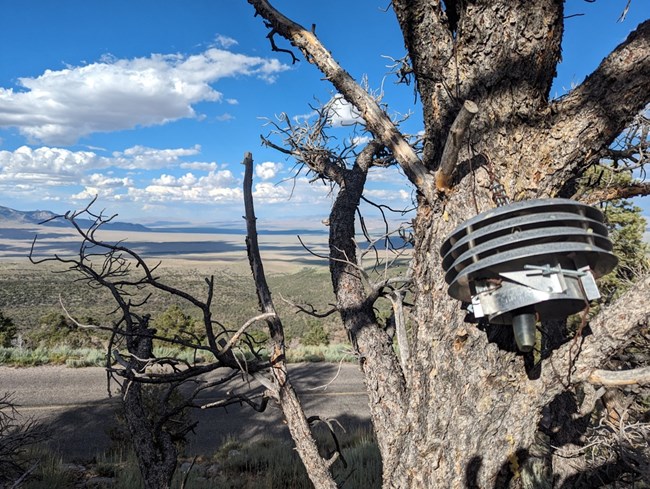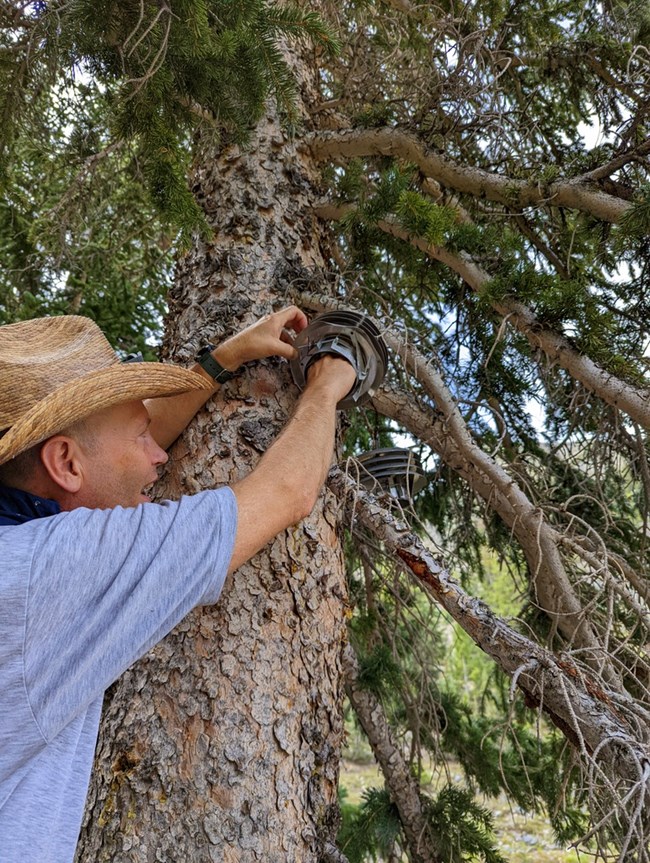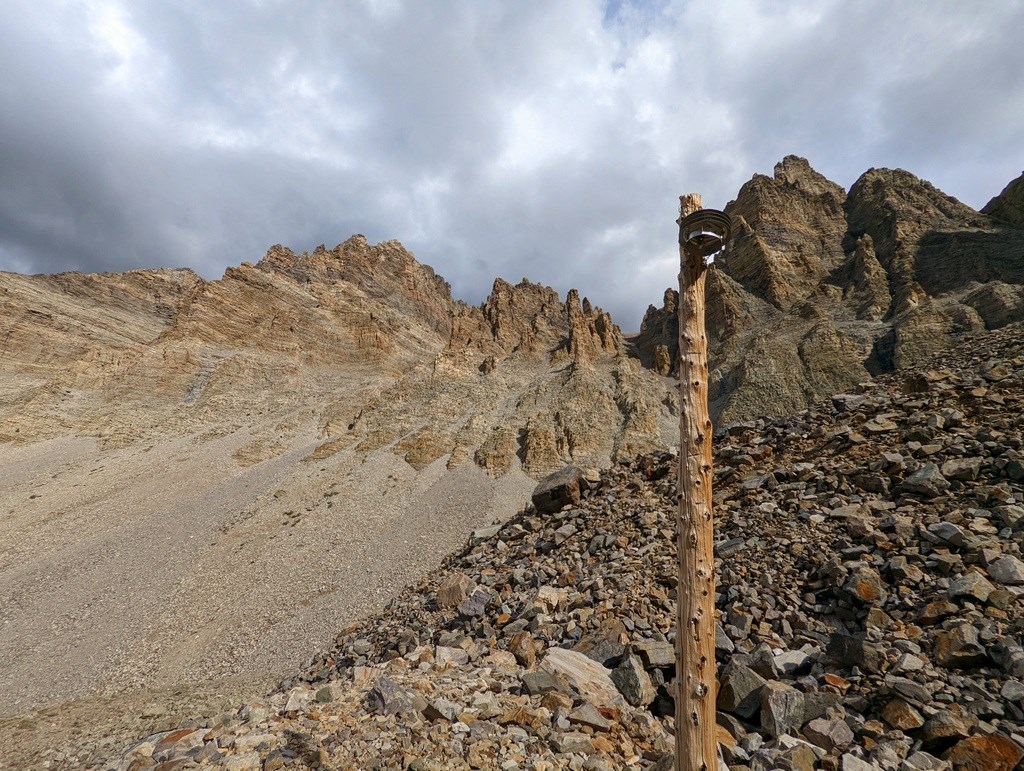Part of a series of articles titled The Midden - Great Basin National Park: Vol. 23, No. 2, Winter 2023.
Article
The Highs and Lows of Monitoring Temperature in the Park
This article was originally published in The Midden – Great Basin National Park: Vol. 23, No. 2, Winter 2023.

Emily Mazan
In 2006, our research team established a network of temperature and humidity sensors throughout the Great Basin National Park with the permission and help of NPS staff. The sensors are protected by radiation shields and suspended from trees or posts where they record hourly measurements of temperature, relative humidity, and dewpoint. Each summer we return to the park with groups of students from our collaborating universities in Ohio and Georgia to replace the batteries in the sensors and download the data. Currently, 29 sensors are located throughout the region, spanning nearly 1.5 vertical miles of elevation from the lower Visitor's Center to the top of Wheeler Peak. Our accumulated record of more than 15 years comprises a rare but important direct measure of changing climate in the park.
Changes in temperature and humidity can influence precipitation and hydrology, plant and animal distribution, and even tourism in mountain regions. For these reasons, monitoring temperature and humidity at different elevations is important. Globally, few embedded sensor networks exist in mountain regions because installation and maintenance can be difficult and harsh weather conditions can cause sensors to malfunction. Despite the challenges, temperature and humidity sensors remain stationed at the peaks of Wheeler, Bald, and Buck Mountains, along Lehman and Baker Creeks, across Buck Ridge, on the Lehman Rock Glacier, and near the alpine lakes.

Emily Mazan
A Changing Atmosphere
Between 2007 and 2020, the daily average temperature of the park increased by 0.92°F. Most of the warming occurred at night and during colder seasons as nighttime low temperatures increased by 0.72°F and minimum temperatures during the winter and spring increased by more than 1.8°F. In general, temperatures increased the most during the winter, with daily winter temperatures warming at a greater rate than the remainder of the year.
Throughout the park, absolute humidity increased over the 14-year study period. Humidity increased during all seasons except the fall. A strong increase in humidity occurred during the spring, increasing nearly twice as much as during the summer. A slight increase in humidity was observed during the winter as well. Increased humidity may be a sign of faster snowmelt in the spring and more rain and storms during the spring and summer.
Different rates of change were observed throughout the park. In general, elevation did not influence the rate of change of temperature or humidity. Observed changes in temperature appear to be influenced by local surroundings. For example, sensors located in areas surrounded by trees generally experienced strong warming trends while those located amongst rocks were characterized by a much weaker warming or even slight cooling trend. The cooling trend was strongest at the Lehman Rock Glacier site.
Considering these trends in temperature and humidity, it appears that Great Basin National Park is experiencing changes in both large-scale weather and climate patterns as well as local factors, such as vegetation. Vegetation can influence temperature and humidity through shading and evaporation of moisture absorbed by the plants. For example, maximum temperatures are often lower where there are trees because of the shade provided and cooling effect from transpiration. With data now available through August of 2023 and observations continuing, we hope that future studies will further our understanding of the expression of on-going climate change in the park.

Emily Mazan
Fun Facts: 2022 Temperature Extremes
In 2022, the average temperature for the entire park was 38.5°F. The highest temperature recorded reached 84°F near the Visitor’s Center during the afternoon on July 22nd. The lowest temperature was recorded at the top of Wheeler Peak the morning of January 1st, reaching -15.7°F
Last updated: December 5, 2023
